Imaging Projects
In this blog, I will share the results of all of my imaging projects. The newest will be at the top and the oldest will be further down the stack. Going back in time here is interesting - some of my early stuff was pretty rough - but I did not see it that way at the time - I was thrilled to get anything back that looked like an image! Hopefully, you will see how my work has progressed with time!
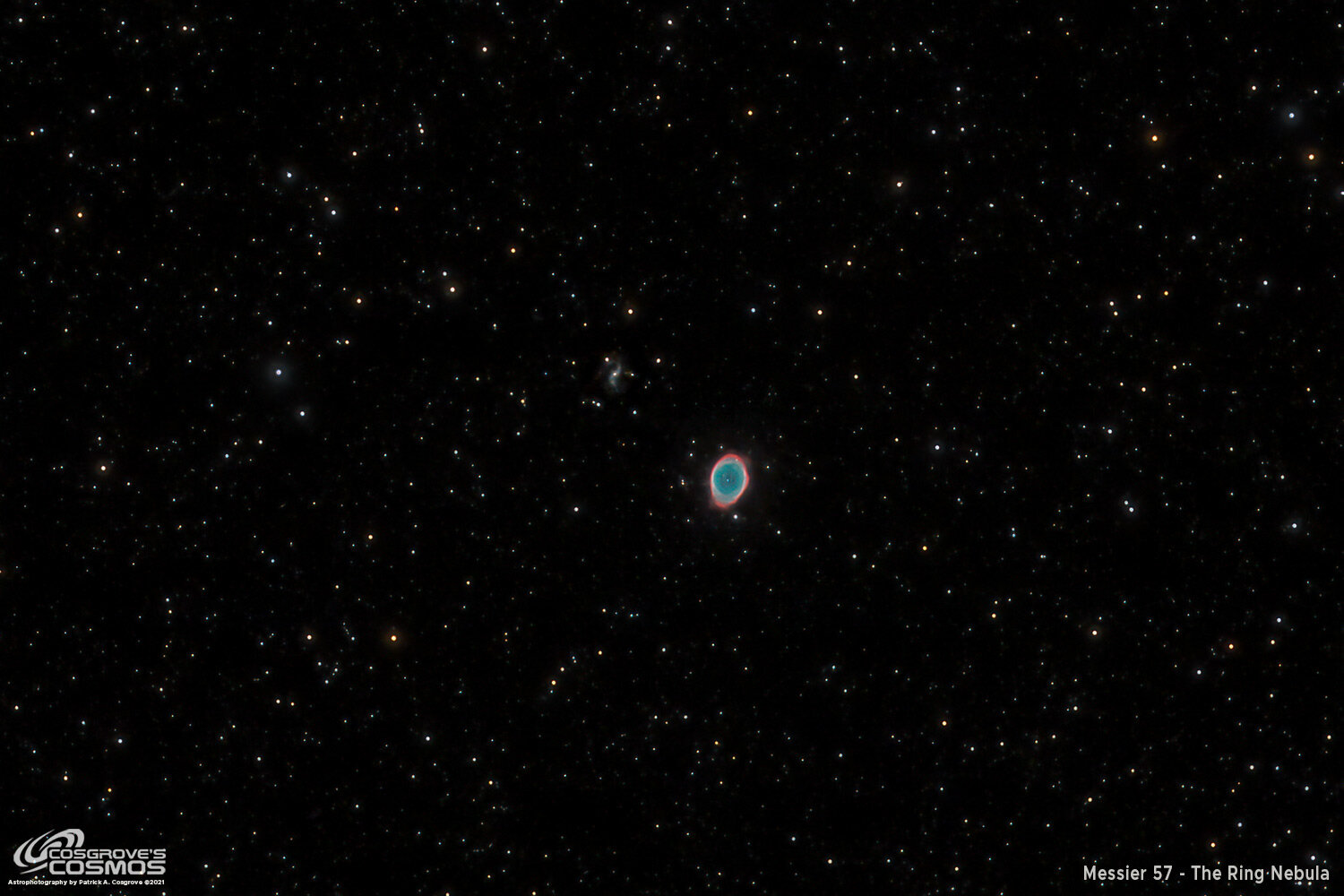
Messier 57 - The Ring Nebula
Messier 57, also known as NGC 6720, and the “Ring Nebula” is located about 2400 light-years away in the constellation Lyra. M57 is a planetary nebula - an expanding shell of gas and dust expelled by its star in the last stages of its life. The outer shell is expanding at a rate of ~one arcsecond per century. The blue-green color of the central area is due to doubly ionized oxygen. This was my second attempt at M57, the first being 2019 when I was just starting. See the comparison between the two.

The Moon - July 1, 2020
The Moon. Best seen at full size. I took this shot on the night of 7-1-20. I don't normally do Moon or planet imaging, but I was tweaking part of my rig and the Moon as there ... so why not. The Moon was in its Waxing Gibbous phase and had an illumination of 83%. This is the percentage of the Moon illuminated by the Sun. On July 1, the Moon is 10.81 days old.

Messier 8 - The Lagoon Nebula
Messier 8, also known as the Lagoon Nebula, is a giant interstellar cloud located in the constellation Sagittarius and is 4000-6000 light-years away. This is a rich star-forming region - in fact, it is one of the two such regions that are bright enough to be seen with the naked eye under dark skies.
This is my second effort shooting this target.

Messier 16 - The Eagle Nebula / Pillars of Creation
My Second time shooting Messier 16 - The Eagle Nebula - this time with the ASI294MC-Pro OSC camera. A significant improvement in quality is shown.

Arp 271 - Interacting Galaxies: NGC 5426 & NGC 5427
Arp 271 consists of two distant spiral galaxies, NGC 5426 & NGC 5427) that are interacting and gravitationally linked. The galaxies are located a whopping 130 Million light-years from earth, in the cancellation of Viro. Both galaxies are of a similar size and have been interacting for millions of years, and they will continue to for millions more. It is not known whether they will collide or not. But we do know that the mutual gravitational attraction has created "bridges" of stars, gas, and dust between them.
The Arp designation refers to "The Atlas of Peculiar Galaxies," a catalog of peculiar galaxies produced by Halton Arp in 1966.

Messier 17 - The Omega Nebula
M17 is one of those objects that has collected a lot of common names over the years. Most often known as the Omega Nebula, it has also been called the Swan, Horseshoe, and Check-Mark Nebula.
As you look towards the southern sky during summer, you are actually looking to a very bright portion of our own Milky Way Galaxy, and M17 is part of that region. The Omega Nebula is a large region of Hydrogen II Gas located in the constellation Sagittarius. It is between 5000 and 6000 light-years from earth and has a diameter of about 15 light-years.

NGC 4631: The Whale Galaxy and NGC 4656: The Hockey Stick
NGC 4631(The Whale) and NGC 4656 ((The Hockey Stick) are fascinating pair of galaxies. Both galaxies fit in the same frame, and this creates an interesting composition.
NGC 4631 is the larger and brighter of the two. Located about 30 Million light-years from Earth, this galaxy has a wedge-shaped form that resembles a whale, thus - its name. In addition, NGC 4631 has a nearby dwarf elliptical galaxy, NGC 4627, as a companion.
NGC 4656, the Hockey Stick - also known as the Crowbar Galaxy, is a highly warped barred-spiral galaxy. Its distinctive shape is due to a *recent* gravitational interaction with NGC 4631. T

NGC 5981, NGC 5982, & NGC 5985: The Draco Triplet
The Draco Group of Galaxies are a string of three primary galaxies that can be seen in a common field of view in the constellation Draco. The largest and roundest one seen at the bottom of the frame is NGC 5985. This has a barred spiral structure, and the arms are clearly visible in this shot. NGC 5981 can be seen at the top of the frame. This is also a barred spiral galaxy, but it is seen almost edge-on. The galaxy in the center is NGC 5982. It is an elliptical galaxy - which is typically seen as nebulous without any obvious structure. These galaxies are approximately 100 Million light-years from earth.
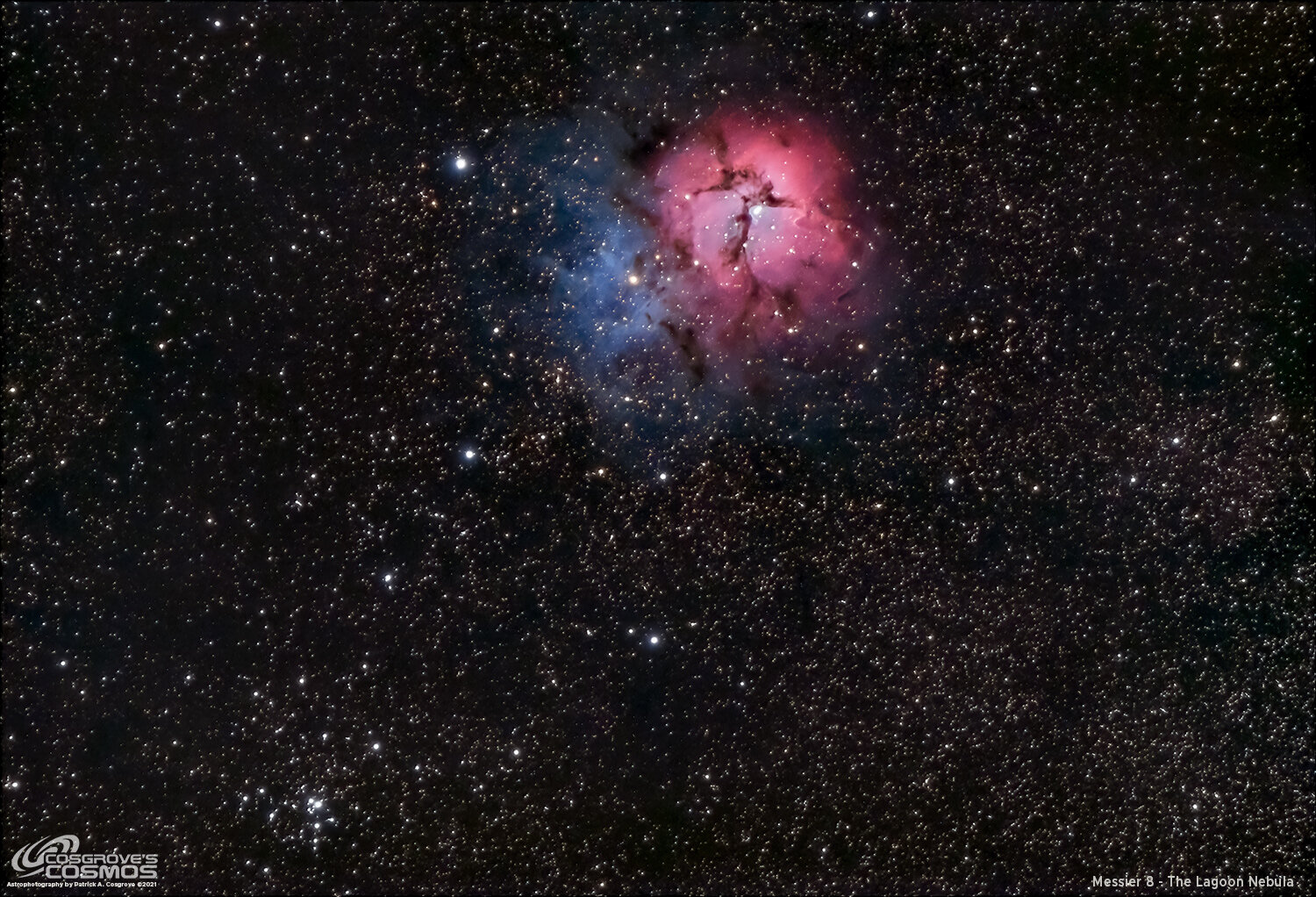
Messier 20 - The Trifid Nebula
The first imaging attempt on Messier 20, commonly known as the Trifid Nebula, is a Hydrogen II region in Sagittarius located about 5000 light-years from earth. The name "Trifid" means "divided into three lobes," This describes the impression when seen visually in a Telescope. This object combines an open cluster of stars, an emission nebula (the red portion), and a reflection nebula (the blue portion), making it a rich target for astrophotography. The dark lanes are concentrations of dust and gas that form nurseries for the formation of new stars
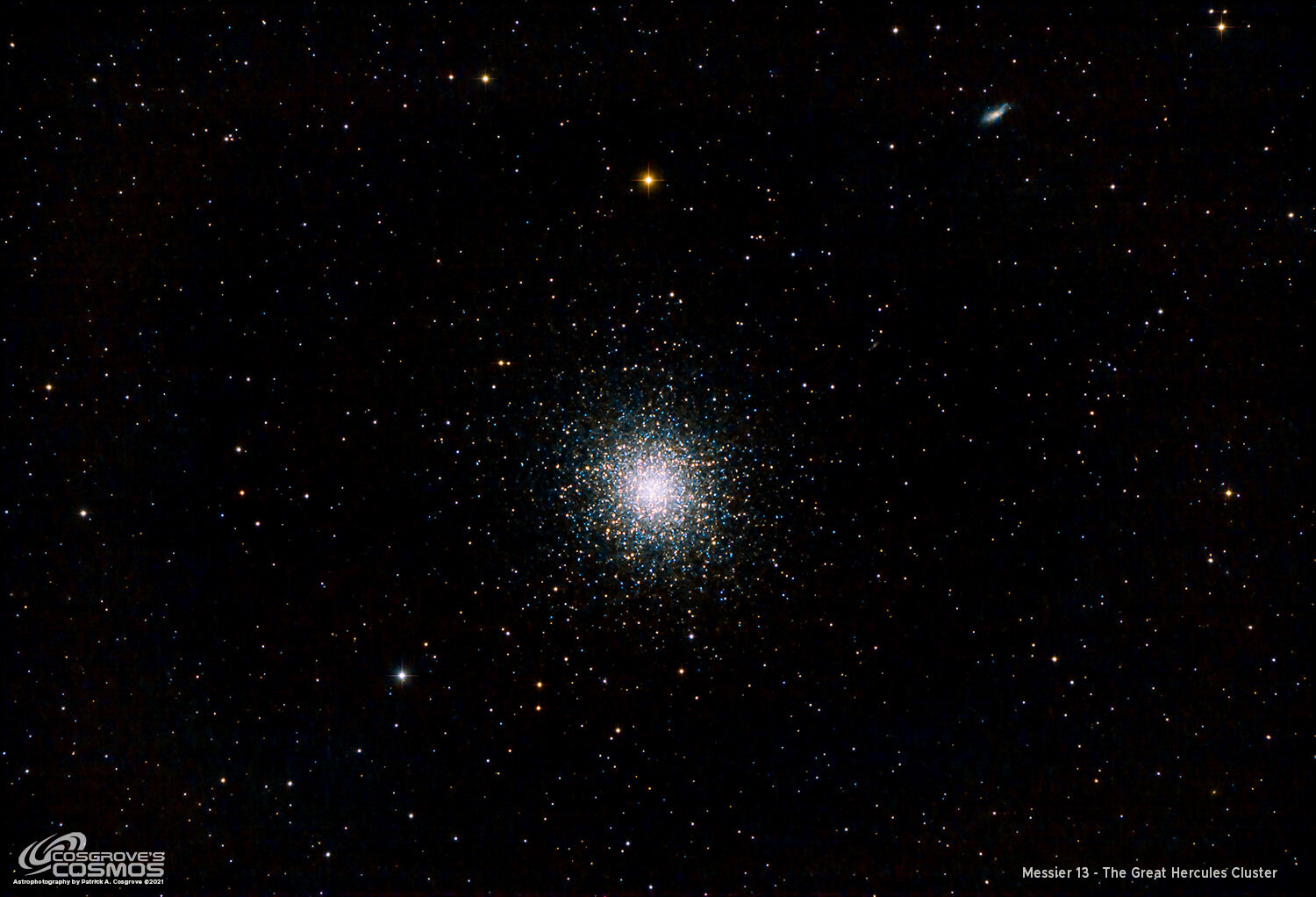
Messier 13 - The Great Globular Cluster
Messier 13 - The Great Hercules Cluster is about 22-25 thousand light-years away and is about 145 light-years in diameter. This consists of a ball of several hundred stars packed together. This and other globular clusters are distributed around the outer plane of the galaxy and seem to be made of ancient stars.
This is the second time I shot this target with the WO132mm Platform. The first was in 2019.
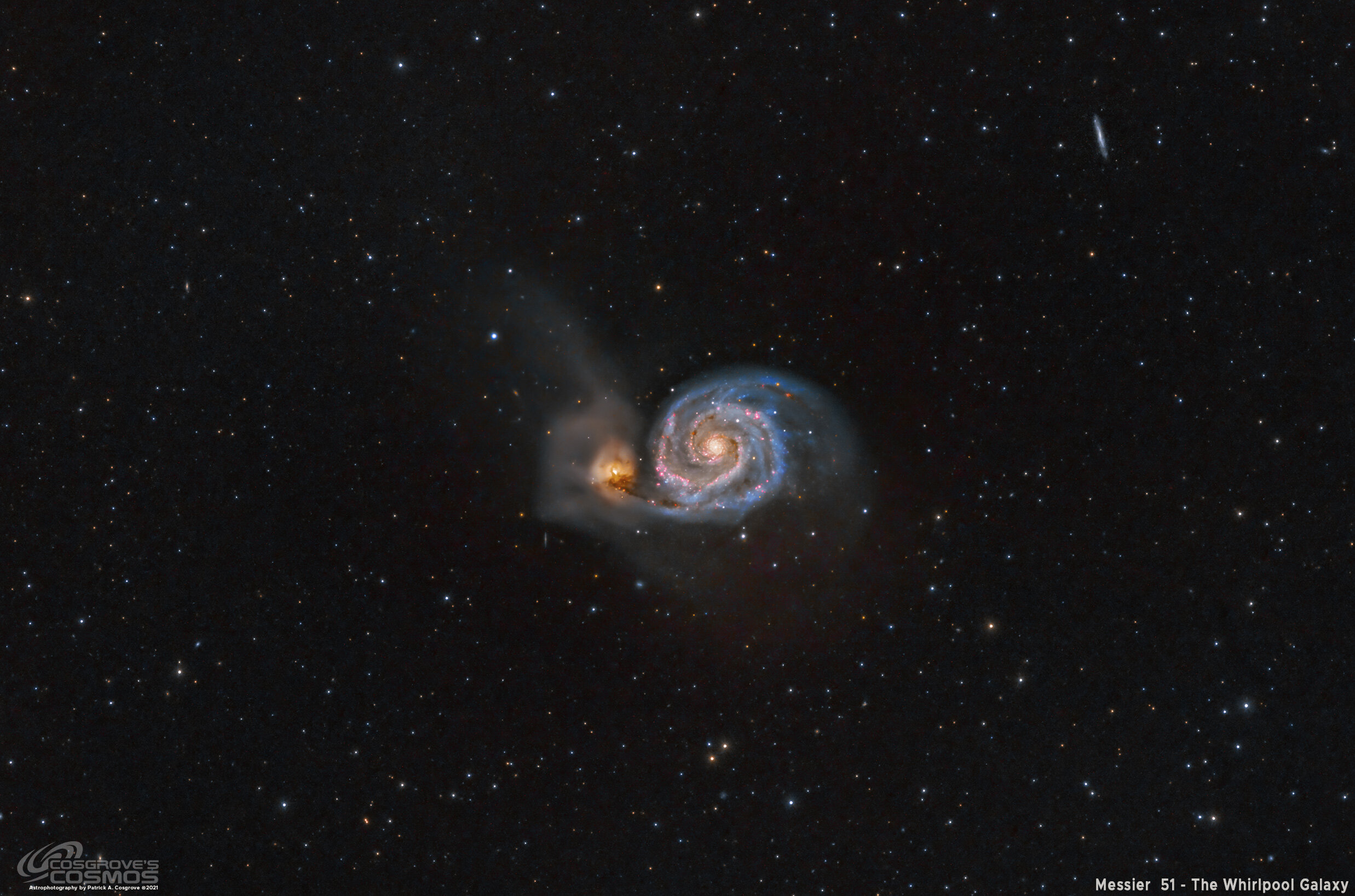
M51 - The Whirlpool Galaxy 2020 version
Messier 51, also know as NGC 5194 is more famously known as the Whirlpool Galaxy. It can be found in the constellation Canes Venatici and is estimated to be about 31 Million Light Years from Earth. M51 was the first galaxy to be classified as having a Spiral and is know o have a Seyfert 2 active galactic core.
This is the second project with this target - captured on the William Optics 132mm Platform.

Messier 106 - A Galaxy in Canes Venatici
M106, also known as NGC 7353, is a galaxy in the constellation Canes Venatici (The Hunting Dogs), which is located between 22 and 25 million light-years away. M106 is a massive galaxy with a very active core region that is home to a supermassive black hole. The core is extremely bright relative to the galaxy and in my image, the core is a little over-saturated because of this.

Messier 63 - The Sunflower Galaxy - 2020 version
Messier 63, also known as NGC 5055, M63 is located in the constellation Canes Venatici (The Hunting Dogs) and has the common name of the Sunflower Galaxy. M63 is a spiral form galaxy with loosely wound arms with relatively poor definition in visible light. The arms are visible when observed by radio at the 21-cm Hydrogen line wavelengths. Located about 29 million light-years from Earth, M63 is a part of the M51 Group, which includes the famous Whirlpool Galaxy.
This is the second project with this target - captured on the William Optics 132mm Platform.

Messier 64 - The Black-Eye Galaxy
Messier 64 is also known as the Sleeping Beauty Galaxy or the Evil Eye Galaxy and is designated as M64, or NGC 4826. It is located 17 million light-years away in the northern constellation of Coma Berenices. It measures about 54,000 light-years in diameter, making it about half the size of our own Milky Way. It has a swirling central disk of dark dust, which gives it a unique look that inspires its name.
This was captured on the William Optics 132mm Platform.
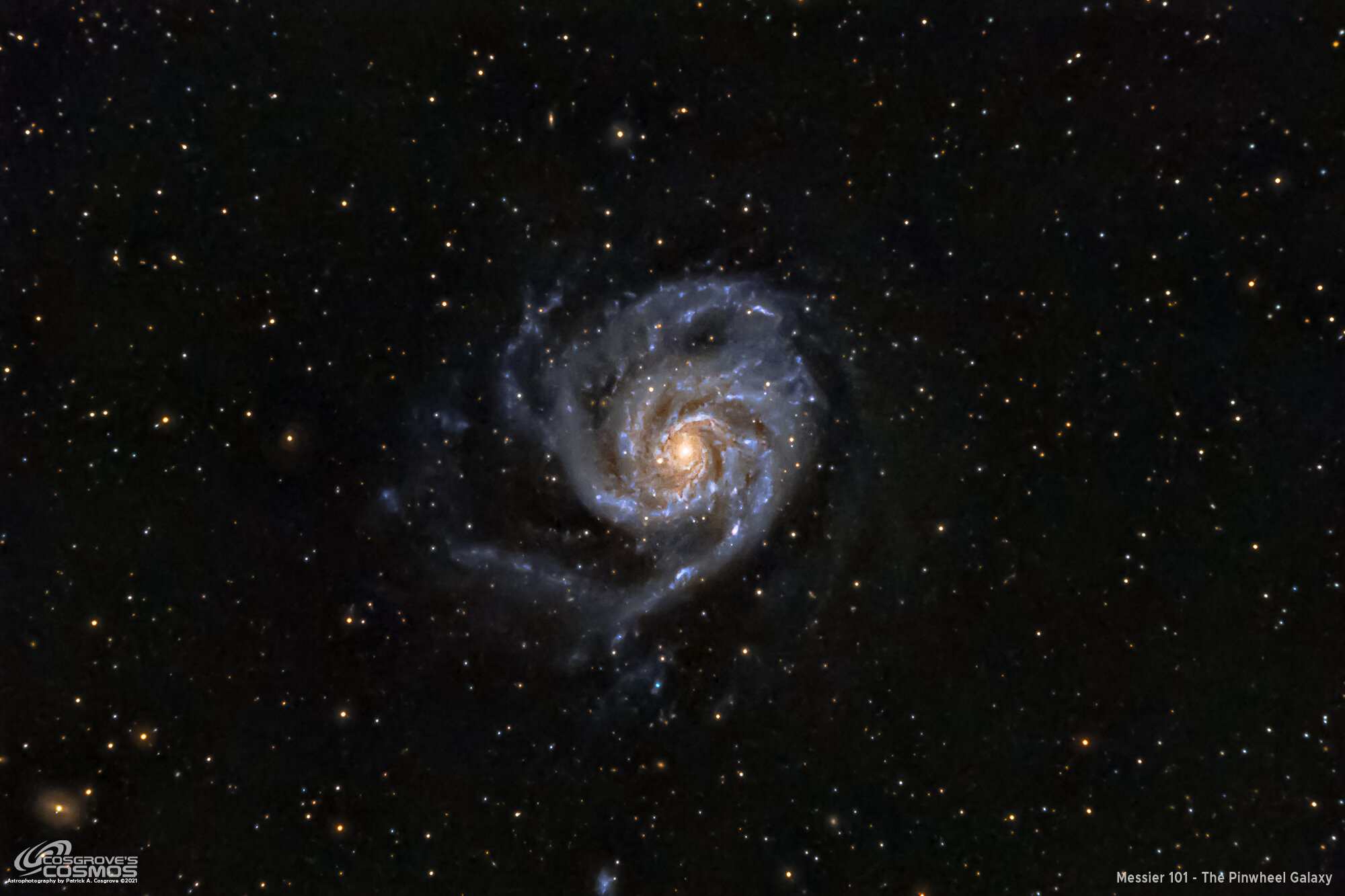
Messier 101 - The Pinwheel Galaxy - 2020 Version
Located in the constellation Ursa Major (the Big Dipper), M101 is a large face-on spiral galaxy located 21 Million light-years from Earth. It is almost twice the size of our own galaxy, the Milky Way, about 170,000 light-years across and containing about a trillion stars. M101 is asymmetrical - it has been distorted by the tidal forces from other galaxies in its local group. This was captured on the William Optics 132mm Platform.
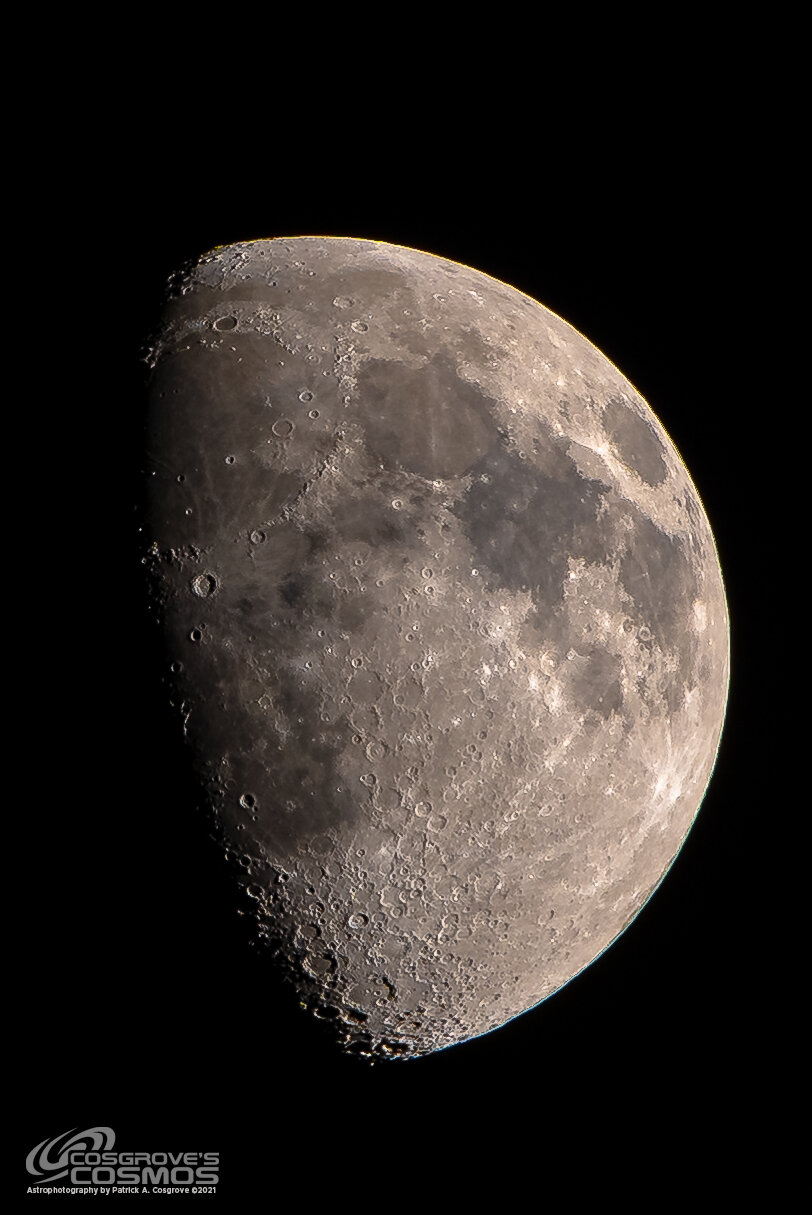
The Moon - 04-03-20 version
VI don't usually shoot planets or the Moon, but I was out last night with my Sony A7iii shooting with the Sony 100mm-400mm GM Zoom with the 1.4 Extender on it - all mounted on a heavy carbon fiber tripod, so I decided to take a shot at it...

Messier 45: The Pleiades and Venus - A Conjunction
Venus approaches M45 - the Pleiades star cluster. It's not very often that you can see a planet so close to a well-known star cluster, and since it was marginally clear last night, I decided to try capturing it. This was shot with my Sony A7iii shooting with the Sony 100mm-400mm GM Zoom with the 1.4 Extender on it. The entire rig was mounted on a heavy carbon fiber tripod. This is 30 x 1-second exposure at F/8, stacked in Deepsky Stacker and processed with Pixinsight and Photoshop.

NGC 2264 - The Christmas Tree Nebula and the Cone Nebula - Runner up for the worst image in the collection!
NGC2264 - Known as the Christmas Tree Nebula and the Cone nebula. This complex is in the constellation Monoceros and is about 2600 light-years away. Bad conditions, with way too few subs, way over processed. Yuck. It’s clearly a runner-up for the worst image in the collection. There is little to like here…

NGC 2174 - The Monkey Head Nebula
NGC 2174- Known as the Monkey Head Nebula. This object is located in the constellation Orion and is associated with NGC 2175 - an Open Cluster embedded in the nebula. This is only 6400 light-years away, so it's in the galactic neighborhood, so to speak.
Surprisingly short 36-minute exposure image

Messier 95 & Messier 96
hese twin Barred-Spiral Galaxies, M95 and M96, can be found in the constellation Leo. M95 is in the lower-left corner and is 33 Million Light years away. M96 in the upper right corner is 30 Million light-years away.
